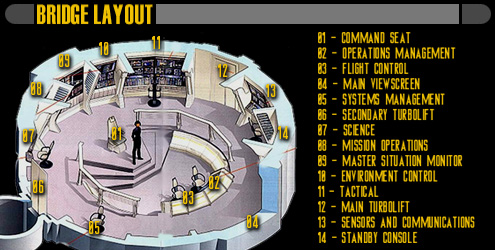|
|
|

Name:
USS Phoenix
Starfleet registry number:
NCC-95299
Class:
Modified Prometheus
Commissioned:
2380
-TECHNICAL
DATA-
Length:
512m
Beam:
185m
Height:
78m
Mass:
4,022,874 metric tons
Decks:
22
Cargo capacity:
20,000 metric tons
-PERSONNEL-
Commissioned crew:
105
Enlisted crew:
204
Total crew:
309
-WEAPON SYSTEMS-
Main ship phasers: 14
Type XV 8.8mw, 36 banks
Torpedoes:
4 fore, 3 aft Photon torpedo launchers, 3 fore Quantum torpedo launcher.
375 Photon torpedoes, 275 Quantum torpedoes.
Shielding:
Regenerative shields, 3486mw, 30 generators
Armor:
Ablative armor. Will absorb approximately 5689mj of impact energy before
depletion. Will also absorb all electromagnetic radiation without
depletion
Other tactical systems: Graviton-matrix
temporal rift-generator (time travel)
Cloaking Device: Multi
Phasic Cloak Modified since the USS Pegasus Incident( USS
Pegasus)
-WARP
PROPULSION-
Warp propulsion system:
M/ARA reactor, mark XIV
Normal cruising speed:
Warp 9.9
Maximum sustainable speed:
Warp 29.968 (~228,000,000c)(TransWarp Drive)
Fuel (MRI):
Supercritical cryogenic Deuterium
Fuel (ARI):
Supercritical cryogenic Anti-Hydrogen
M/A moderating element:
5th phase crystalline Dilithium
Fuel replenishment:
4 Bussard ram scoops
-IMPULSE PROPULSION SYSTEM-
Impulse reactors:
20
Fuel:
Cryogenic slush Deuterium
Drive coil assemblies:
6
Vectored thrust directors:
6
Hover coils:
20
Landing struts:
4
The ship has the ability to land on nearly any surface, including water, where
the Hover coils will negate the ship's mass. Standard orbit to completion of
landing sequence takes approximately 6 minutes 18 seconds.
-COMPUTERS AND SENSORS-
Crew interface software:
Library Computer Access and Retrieval System,
version 6.0
Data transfer rate:
11300 kilo quads/sec
Dedicated modules:
6000
Storage per module:
900,000 kilo quads
Sensor high resolution effective range: 10
LY
Sensor med. to low res. effective range:
32 LY
-COMMUNICATIONS-
Personal communicator range:
18km
Ship to ground range:
240,000km
Communications speed:
42.2 kilo quads/sec
Encryption type:
Military strength 3521 kilo quad digital algorithm
Subspace signal speed:
Warp 9.9992 (184,924.62 x c)
-TRANSPORTER SYSTEM-
Personnel transporters:
6
Emergency beam-out only:
12
Cargo transporters:
4
-MULTIPLE VECTOR ASSAULT MODE (MVAM)-
The MVAM is a completely new system that is currently only in use on Prometheus
class vessels.
It allows the ship to separate into 3 completely independent, warp-capable
vessels that can be controlled from by the Computer, the Main Bridge or from
Battle Bridges in each ship. This gives the ship the ability to attack from
different angles (Hence Multiple Vector), and the combination is lethal.
The Commanding Officer takes command of the Upper section, which has the most
speed but is less heavily armed. The Chief Tactical Officer takes command of the
Lower section, which is the slowest but the most heavily armed. The Executive
Officer takes command of the Middle section which is a compromise between speed
and armament. Each individual Battle Bridge is connected to the Main Bridge by a
single high-speed, dedicated turbo lift.
In the case of the Upper section, one warp nacelle folds out of the bridge
plateau and one folds out of the underside for low-speed warp travel (Maximum
warp 4). The other two sections use two each of the four main nacelles. Each
section has a small M/ARA reactor, with the Middle and Lower section reactors
linking to provide power when the ship is in connected flight mode.

The ship's computer can remotely pilot the Middle and Lower sections to a
specified coordinated attack pattern, but results are better when the ships are
being controlled by sentient beings. Each section has its own dedicated Tactical
Computer Coordination System (TCCS). Each ship's TCCS is in constant real-time
communication with the others'. This allows for execution of very complex
tactical maneuvers, some of which are classified and their existence known only
by the Captain and Executive Officer.
Full MVAM separation (All ships 500m apart) can be carried out in 4 minutes 32
seconds from cold shutdown of MVAM systems, but upon initiation of Yellow or Red
Alert status the systems are brought to hot standby, where full separation can
be carried out in 56 seconds if required.
ENGINEERING

MAIN BRIDGE

Navigation